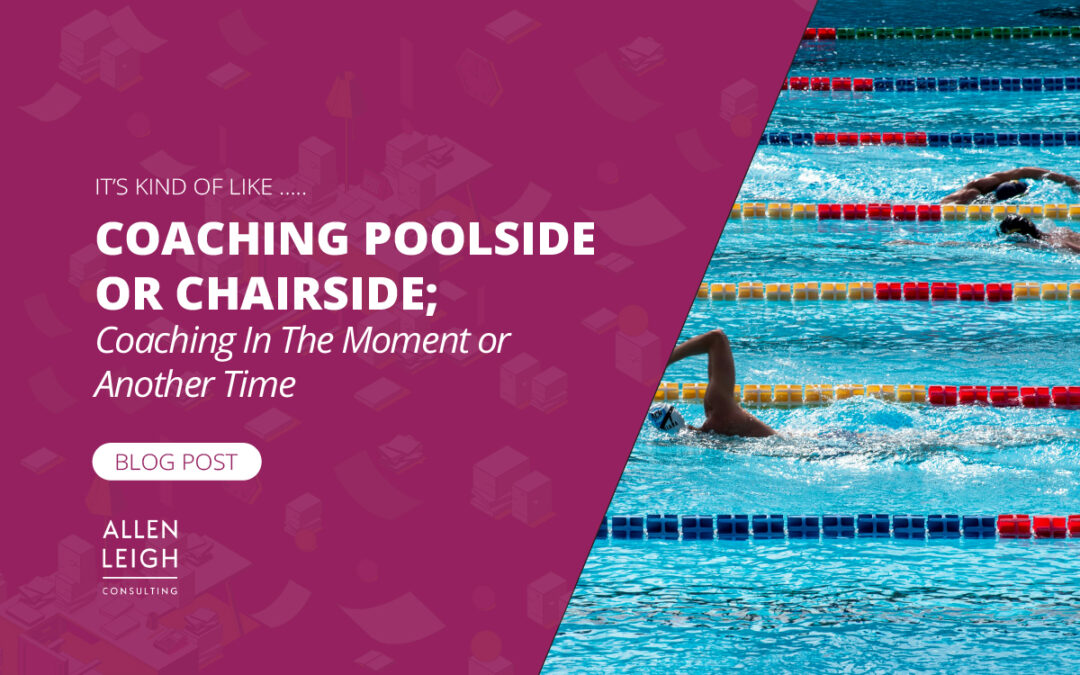For the recently trained manager, there is pressure to provide good coaching to their team, but uncertainty and fear about how to do it correctly.
The truth is that bad coaching is better than no coaching, and the only way to improve is to keep experimenting with different tactics. I encourage leaders not to put a lot of pressure on themselves and to rarely, if ever, say, “Let me provide you some coaching on this.”
You don’t need to announce that you are coaching for it to be effective; it is better if you don’t.
Coaching can be done in the moment, like during a meeting, while observing a task, or in a more planned setting, like a one-on-one. Both approaches have benefits.
Coaching in the Moment
I liken coaching in the moment to poolside coaching, like the swim coach who watches your stroke and makes immediate suggestions for technique improvement.
Poolside coaching involves active involvement in the swimmer’s actions. The coach walks up and down the poolside, yelling corrections like “lift your arms,” “kick straighter,” “pull harder,” etc.
This type of coaching is best for technical opportunities like communication, presentation, writing and thinking skills. Just like the swim coach, this type of coaching is best at the moment as it allows your direct report to improve their skills right in front of you.
In business, this coaching style is critical to enhancing your team’s current skill set. With poolside coaching, you are less focused on new skills or growth than on enhancing the individual’s current capacity in their role.
Reflective Coaching
The other position of coaching is chairside, which is a more reflective style that resembles the psychologist’s chair.
In this style of coaching, the leader reflects on a recent situation or trend with the hopes of improving the pattern for the next time. Chairside coaching is best for one-on-ones and is more focused on expanding the future potential of your direct reports. Our suggested approach for one-on-ones is the 4 C approach.
- CONNECT– ask how their week is going and connect on a personal level (10 minutes)
- CHECK-IN – ask if they have anything they need your thoughts on and ask for any updates you need (10 minutes)
- CONSULT OR COACH– this should be a majority of the time. You can ask them if there is anything that they are struggling with or would like advice on, or you can just offer a topic you would like to talk about (40 minutes)
- CLOSE – the final 10 minutes is about commitments and next steps (10 minutes)
Both poolside and chairside coaching are effective techniques. Poolside is the best approach for in-the-moment development, and chairside is better for more corrective and development-focused topics.
Key Takeaways
- Have some fun with coaching this week, and don’t take it so seriously!
- Experiment with the poolside approach during your next meeting our tactical catch-up. When you get a deliverable, ensure that you give some coaching feedback.
- See how you can apply the 4-C one-on-one approach to your next individual meetings.
- Reflect on where you are currently spending your time in this discussion and how you might mindfully shift to focusing on one of the other 4 Cs



